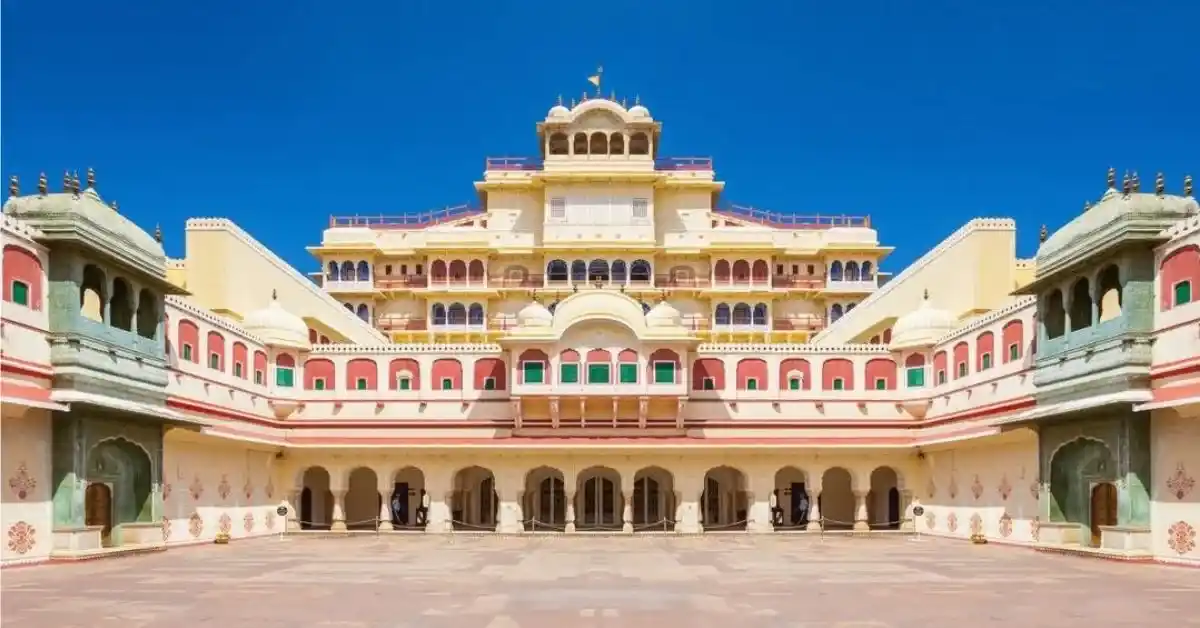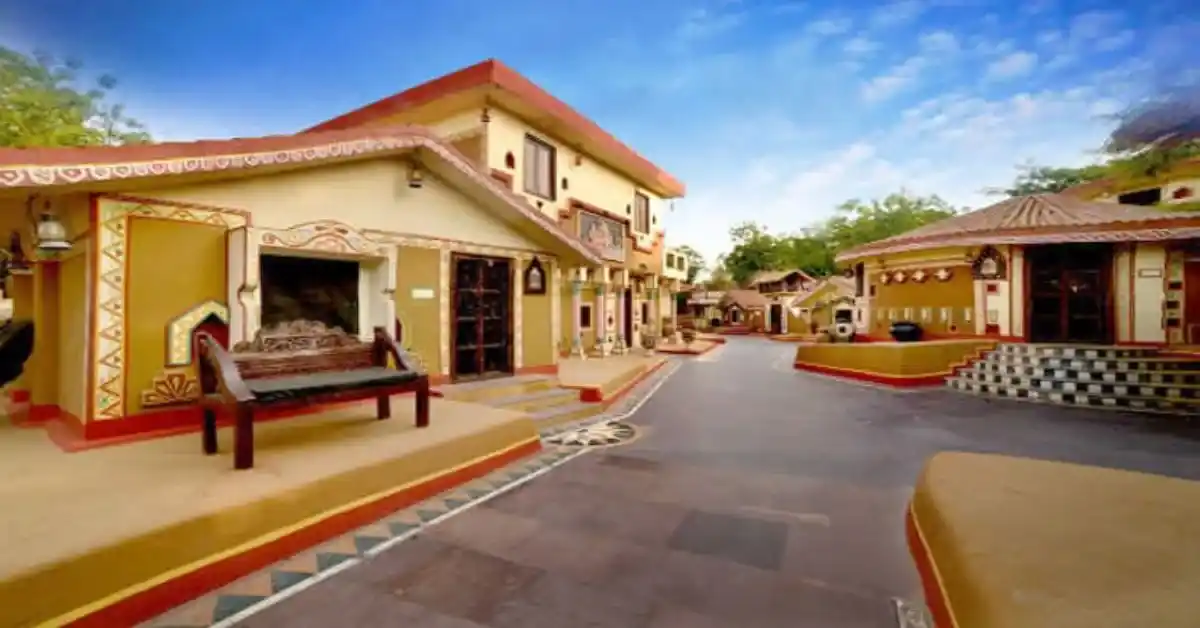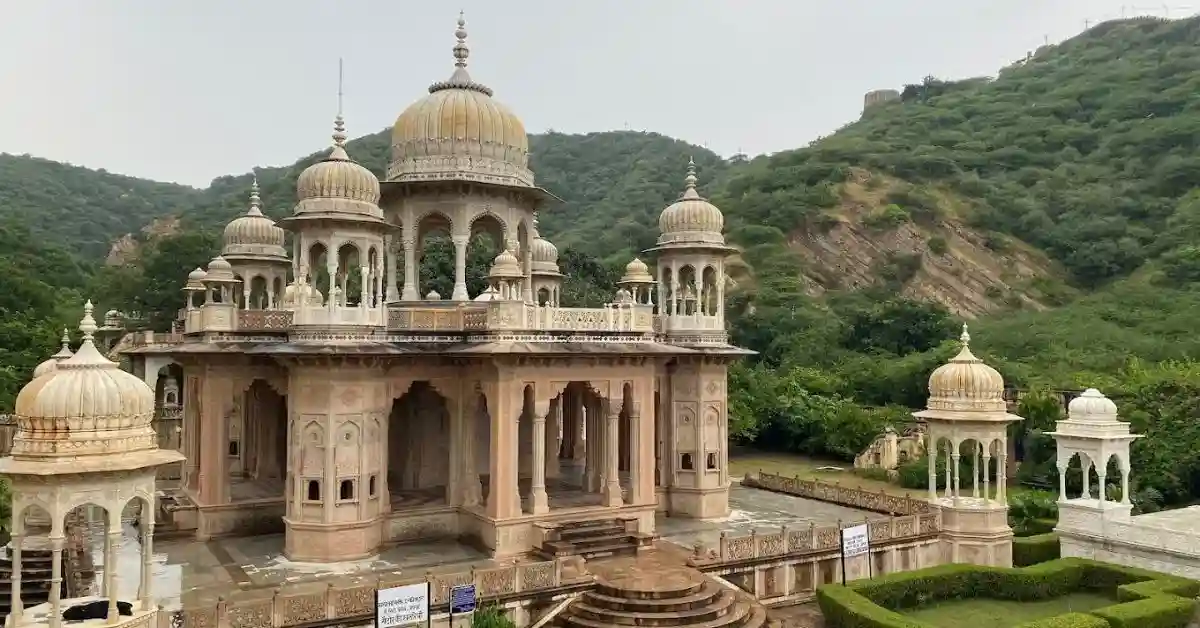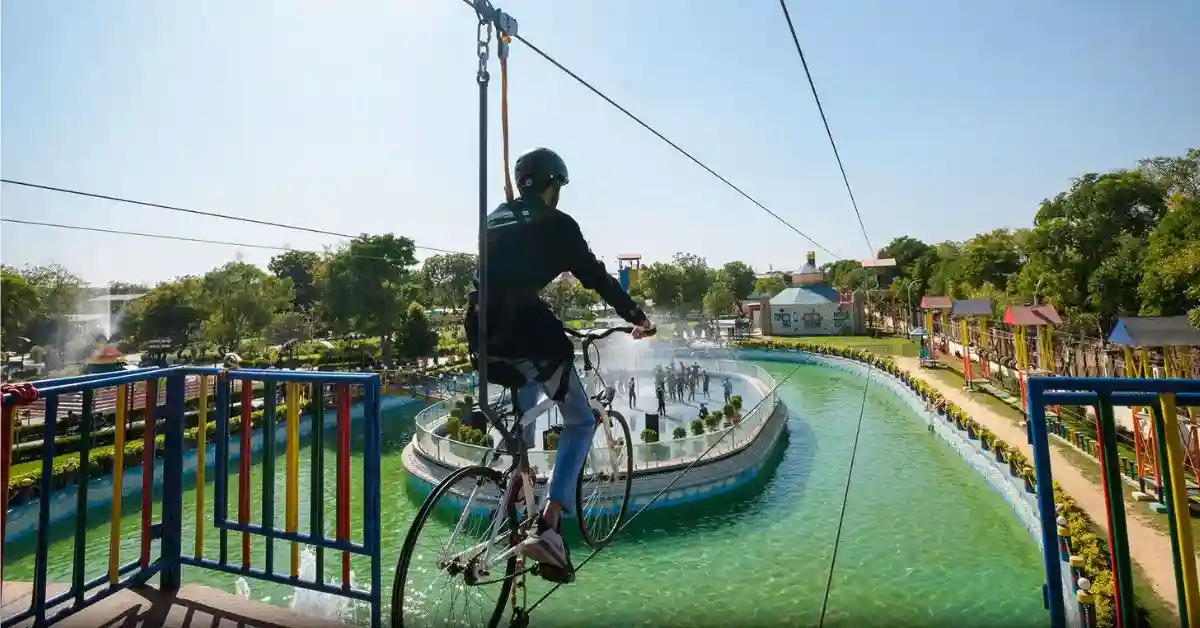About City Palace Jaipur
The City Palace Jaipur is one of the most famous tourist attractions situated in the old part of Jaipur. It was built by Maharaja Sawai Jai Singh II from 1729 to 1732. The Palace has different parts like courtyards, buildings and gardens including the Chandra Mahal and the Mubarak Mahal. Other parts of the Palace include Mukut Mahal, Maharani’s Palace, Shri Govind Dev Temple, Diwan-i-Am and Diwan-i-Khas. There’s also a museum called Maharaja Sawai Man Singh II Which displays special handcrafted items and holds a collection of royal items from the past raja-maharajas.
The front of the City Palace is carefully designed with a mix of Mughal, Rajput and European styles. The outer wall was built by Jai Singh II as the palace has gone through changes over time, some even from the early 20th century. The red and pink sandstone make the palace even more beautiful. There are three gates, out of which two gates i.e. Virendra Pol and Udai pol are open to the public, while the Tripolia Gate is only for the royal family.
City Palace of Jaipur used to be the house of the royal family but it got split into two parts. One Part has museums and a courtyard for people to visit and the other part is where the royal family still lives.
History & Architecture Of City Palace Jaipur
The City Palace Jaipur was commissioned by Sawai Jai Singh II, who led the Kachwaha Rajput Clan and is also the founder of Jaipur. He ruled over the areas of Jaipur and Amer for centuries. He established Jaipur City and City Palace of Jaipur after he decided to shift his capital from Amer to Jaipur in the 17th century. The main reason behind shifting of capital was increasing population and water shortage problem in Amer.
Sawai Jai Singh II began building the outer wall of City Palace from 1729 to 1732 which ran over several acres of area throughout the city. Over the decades, various other structures were built by his successors which added charm to the palace. Therefore, different buildings and courtyards were added to the palace at different timestamps. The last ruler who held the throne in this Palace was Raja Man Singh II.
The architectural style of City Place is a perfect blend of Rajput and Mughal style and The City Palace was built using red and pink sandstone. The palace has vast courtyards surrounded by several arched smaller palaces. The architect of this beautiful palace is Vidyadhar Bhattacharya, who designed the Palace according to the Vastushastra. The City Palace has three gates, ‘Tripolia Gate’, ‘Udai Pol’ & ‘Virendra Pol’. The entrances of the Palace are intricately decorated with the finest handiwork. The Murals, mosaics, meticulous stonework and honeycomb windows make a perfect blend of design, art, color and culture in the Palace.
The City Palace Jaipur is open for tourists and they can explore it on their own or with a guided tour. This well-maintained and beautifully designed Palace is among the top attractions in the city. Additionally, it also serves as the residence for the royal family of Jaipur.
Things To See Inside City Palace Jaipur
- Diwan-e-Aam: Diwan-e-Aam also known as Sabha Niwas, is a hall of the public audience. It was used as the hall for holding public meetings with Maharajas of Jaipur. The hall of the Diwan-e-Aam has many arched openings held up by marble columns and a well painted plaster ceiling. There is Jaali on one side of the hall which royal women might have used to see the things going in the hall. This allowed them to be part of the outside world while still following the purdah tradition.
- Diwan-e-Khas: Diwan-e-Khas, also known as Sarvato Bhadra, was used as the private audience hall of the Royal King. The ceiling of the hall is painted in red and gold and has large crystal chandeliers. The hall also has two huge silver vessels or Gangajalis with a capacity of 4000 litres. It is believed that Maharaja Sawai Madho Singh II used to carry the holy water of the Ganga on his trips to England. The hall also has a stall for buying local handicrafts or traditional Rajasthani dresses, Handwritten manuscripts of Hindu Sculptures, ancient texts, rugs and the Royal throne ‘Takht-e-Rawal’. The hall has four rooms around its four corners. This hall is still used for celebrations like Dussehra, Gangaur, Teej and Makar Sankranti.
- The Gates of City Palace/ Pritam Niwas Chowk: City Palace has three gates for entry i.e. Virendra Pol, Udai Pol & Tripolia Gate. The palace has a courtyard known as Pritam Niwas Chowk which leads to the Chandra Mahal and has four small gates (i.e. Peacock Gate, Lotus Gate, Leheriya Gate & Rose Gate) which are dedicated to the four seasons and hindu gods. The Peacock Gate is dedicated to Lord Vishnu and represents Autumn, the Lotus Gate is dedicated to Lord Shiva-Parvati and represents Summer, the Leheriya Gate is dedicated to Lord Ganesha and represents Spring & the Rose Gate is dedicated to Goddess Devi and represents winter.
- Chandra Mahal: Chandra Mahal is a seven-storeyed building where the royal family of Jaipur still lives. The balconies of this mahal offers a panoramic view of the Jaipur City. The seven floors of the Mahal are used for a different purpose. Its most popular floor is the ground floor which has been converted into a museum which showcases carpets, manuscripts, artefacts and other items belonging to the royal family. The other floors of the Chandra Mahal are Sukh Niwas, Shobha Niwas, Chhavi Niwas, Shri Niwas & Mukut Mandir. Chandra Mahal has beautiful paintings, mirror work and floral decorations. The Chhavi Niwas was used by Maharajas as Monsoon as their monsoon retreat. There is a separate ticket for the Chandra Mahal as the royal family also stays in this Mahal. The royal flag is hosted on the Chandra Mahal when the royal family is residing in the Mahal.
- Mubarak Mahal: Mubarak Mahal, also known as ‘Welcome Palace’ was built by Maharaja Madho Singh II in the 19th century. It was constructed with the purpose of welcoming the guests of Maharaja. It’s made with the blend of Islamic, Rajput and European architectural styles. The Mubarak mahal has been converted into Maharaja Sawai Man Singh Museum, showcasing ornamental clothes worn by Sawai Madho Singh I, royal outfits, Sanganeri block prints, embroidered shawls, Kashmiri pashminas and silk saris.
- Baggi Khana: It is a museum which has on display the various chariots and royal rides used by the Royal Family. It also has on display a European styled cab used to transport royal deities which was gifted to Maharaja Sawai Ram Singh II by Queen Victoria in 1876.
- Maharani Palace: Maharani Palace, also known as Arms Gallery or Anand Mahal Sileh Khana, used to be the residence of the royal ladies. It displays old weapons like knives, daggers and rifles which were used by the Rajputs in war, some are as old as from the 15th century. Some daggers have detailed carvings. There is also a life-size armoured horse. The collection includes 19th century swords, a tulwar owned by Maharaja Ram Singh Ji II, a painted shield and a unique child’s metal turban. The armour section has rare helmets including a 16th century watered steel helmet.
- Textile Gallery: This gallery is situated on the ground floor of the Mubarak Mahal. Inside the gallery, there are different types of fabrics and clothes like Maharaja Sawai Madho Singh I’s atmasukha, Maharaja Sawai Pratap Singh’s wedding Jama and Maharaja Sawai Ram Singh II’s set of robes (angarakhas) are on display. There’s also a rare pashmina carpet made around 1650 and items like Polo outfits and cups belonging to Maharaja Sawai Man Singh II as well as his billiards outfit.
- Painting and Photography Gallery: The painting and photography gallery at the Maharaja Sawai Man Singh II Museum showcases artworks and photos from the 18th and 19th century, highlighting the impact of political and cultural changes. The museum has approximately 3,000 paintings, featuring mughal, Deccani and Jaipur styles including a notable Raas-lila painting. The photography collection includes 6,500 prints and 1,941 glass plate negatives, dating from the 1860s to 1950s. Maharaja Sawai Ram Singh II’s association with photography is significant, with the collection containing portraits, landscapes and unique insights into Zenana life. The Photographic equipment dates back to the 1860s representing the wet plate collodion process.
- Govind Dev Ji Temple: This Temple is dedicated to Lord Krishna and is located in the premises of City Palace.
City Palace Jaipur Ticket Prices/Entry Fees
The ticket price of City Palace of Jaipur for Adults is Rs 300 & for children (5-12 years), Sr. Citizen, Defence Personnel, Students with valid Id is Rs 150. The ticket price of City Palace for foreigners is Rs 700 & Foreign students is Rs 400. Audio Guides are also available at City Palace Jaipur for just Rs 200 per person.
| Category | Tickets Price |
|---|---|
| Indians | Rs 300 |
| Indian Students | Rs 150 |
| Foreigners | Rs 700 |
| Foreign Students | Rs 400 |
City Palace Jaipur Online Ticket Booking
The Ticket of City Palace Jaipur can be book online through its official website https://thecitypalacejaipur.com/book-ticket
City Palace Jaipur Timings
The timings of City Palace Jaipur is from 9:30 AM to 7 PM. The City Palace opening time is 9:30 AM and its closing time is 7 PM.
Best Time To Visit City Palace Jaipur
The best time to visit City Palace of Jaipur is during winter season from October to March. The weather during this time is pleasant and comfortable for exploring City Palace. You can also visit City Palace during weekdays to avoid crowd as it is less crowded than weekends. It may take around 3-4 hours to visit City Palace of Jaipur.
City Palace Jaipur Photos/Images
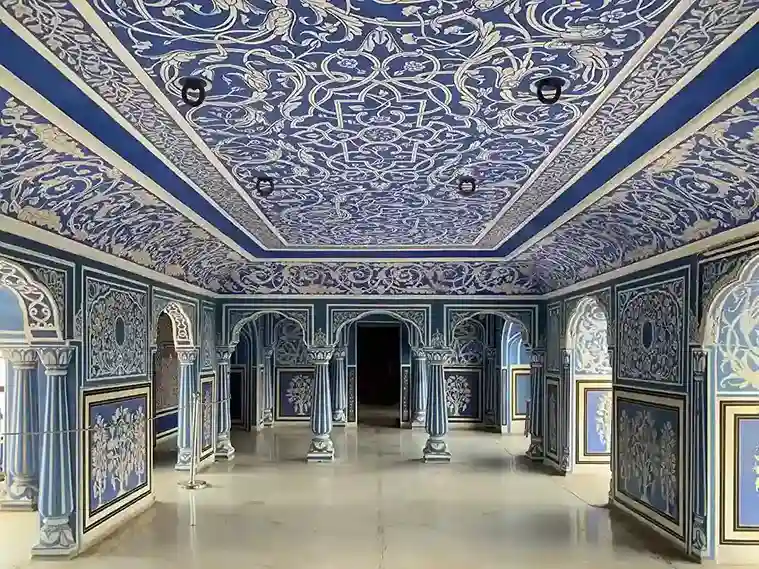


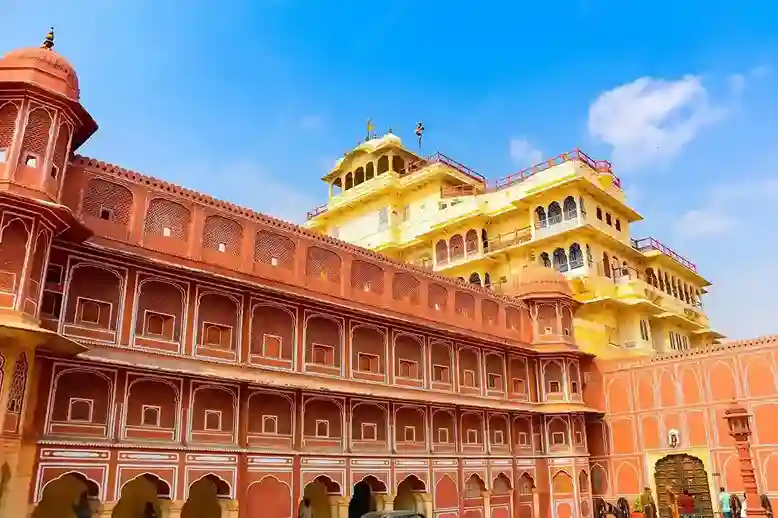
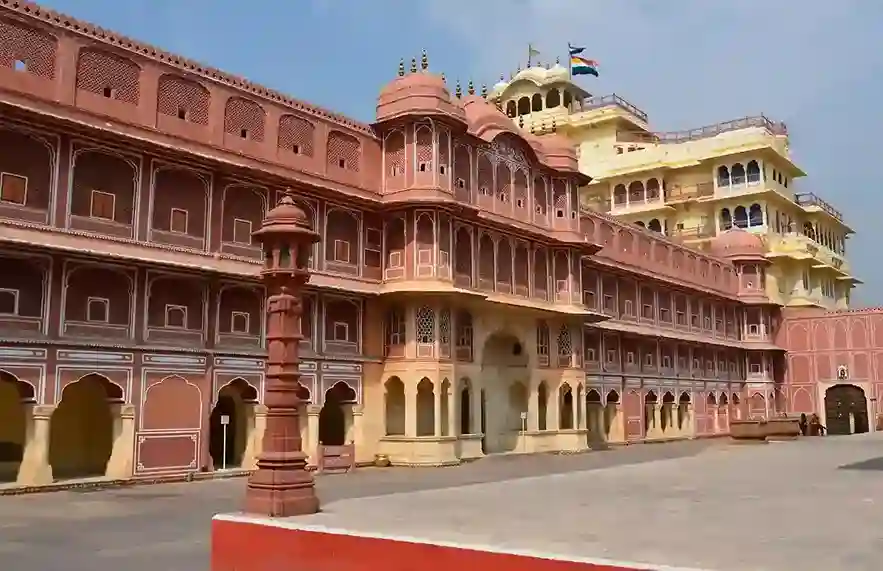
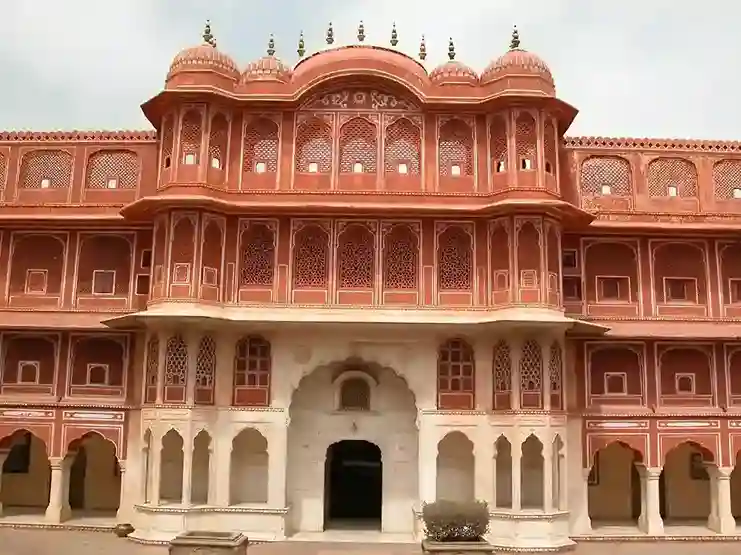
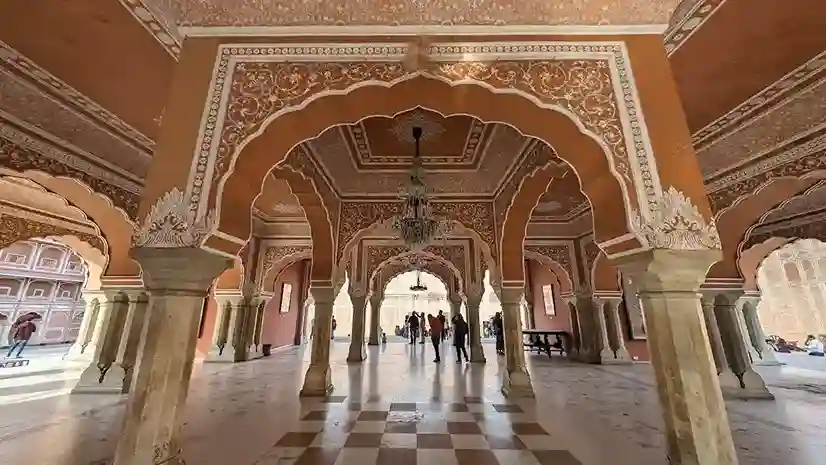

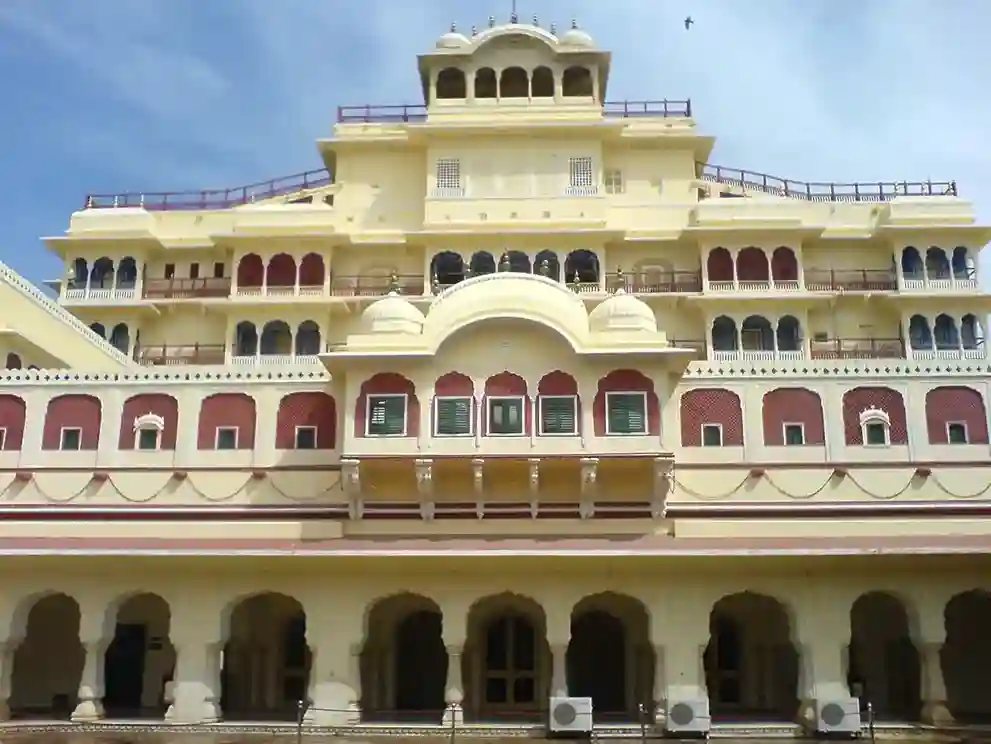
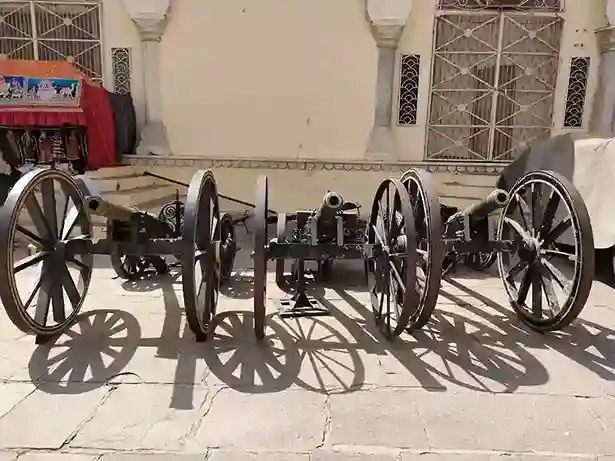
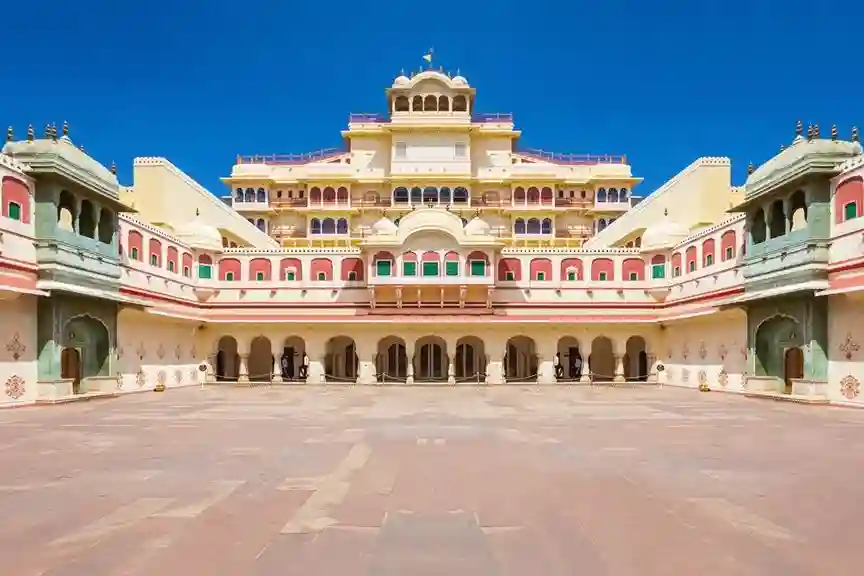
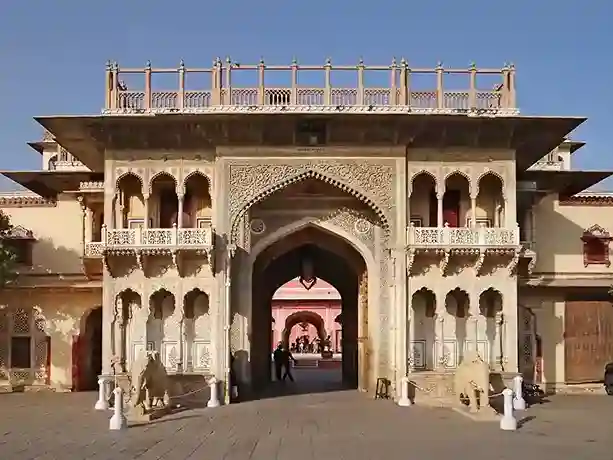
Facilities At City Palace Jaipur
- Guided Tour
- Audio Guide
- Restrooms
- Wheelchair Accessibility
- Information Desks
- Souvenir Shops
- Parking Facilities
- Cloakroom
Things To Know Before Visiting City Palace Jaipur
- Consider taking a guided tour to gain insights into the historical and cultural significance of different sections of the palace.
- It is advisable to wear comfortable shoes as you would have to do a lot of walking.
- Carry a water bottle with you.
- City Palace Jaipur opening time is 9:30 AM and its closing time is 7 PM. You can come accordingly.
- It might take around 3-4 hours to visit City Palace of Jaipur completely.
- There is a separate ticket if you want to go to Chandra Mahal, where the royal family of Jaipur still lives.
Address Of City Palace Jaipur
City Palace of Jaipur is located at Gangori Bazaar, J.D.A. Market, Pink City, Jaipur.
How To Reach City Palace Jaipur
City Palace of Jaipur is located at Gangori Bazaar, J.D.A. Market, Pink City, Jaipur. It is easily accessible from all parts of the city. You can reach City Palace of Jaipur from various modes of transportation i.e. public or private modes of transportation. Following are the modes of transportation through which you can reach City Palace Jaipur:
By Metro: The Nearest metro station to City Palace Jaipur is Badi Chaupar Metro Station which is 650m away from the palace. From there, you can easily walk to the Palace.
By Bus: The Nearest Bus Stop to City Palace Jaipur is Tirpolia Bazar Bus Stop which is 450m away from the palace. You can reach the Bus Stop by bus no. 1.
By Rail: The Nearest Railway Station to City Palace Jaipur is Jaipur Junction which is 3.9 Km away from the palace. From there, you can take bus or rickshaw to reach the Palace.
By Air: The Nearest Airport to Jantar Mantar of Jaipur is Jaipur International Airport which is 13.5Km from the Palace.
By Cab/Rickshaw: You can easily reach City Palace Jaipur by Cab or Rickshaw.
By Personal Vehicle: You can easily reach City Palace by your personal Vehicle.
Parking Facility At City Palace Jaipur
Paid Parking Facility is available at City Palace Jaipur.
Website Of City Palace Jaipur
The official website of City Palace Jaipur is https://royaljaipur.in/
Contact Number Of City Palace Jaipur
You can contact City Palace of Jaipur at 0141 408 8888
Places To Visit Near City Palace Jaipur
Top attractions to visit near City Palace of Jaipur are:
- Jantar Mantar Jaipur (100 m)
- Hawa Mahal (500 m)
- Isarlat Sargasooli (450 m)
- Bapu Bazar (1.2 Km)
- Sanganeri Gate (1.5 Km)
- Ajmeri Gate (1.5 Km)
- Ramniwas Bagh (1.8 Km)
- Albert Hall Museum (1.9 Km)
- Jaipur Zoo (2 Km)
- Gaitor Ki Chhatriyan (2.3 Km)
- Nahargarh Fort (3.1 Km)
- Birla Planetarium (3.5 Km)
- Central Park (3.6 Km)
- Moti Dungri Ganesh Ji Mandir (4 Km)
- Shree Khole Ke Hanuman Ji Ka mandir (4.1 Km)
- Birla Mandir (4.1 Km)
- Jal Mahal (4.3 Km)
- Sisodia Rani Ka Bagh (5.5 Km)
- Amber Palace (7.7 Km)
- World Trade Park (8.6 Km)
- Jaigarh Fort (8.6 Km)
- Panna Meena Ka Kund (8.6 Km)
- Patrika Gate (9.9 Km)
- Akshardham Temple (10 Km)
People Aslo Read
Location Map For City Palace Jaipur
FAQs
What is the price of City Palace Jaipur?
The ticket price of city Palace of Jaipur is 300 for Indians and Rs 700 for foreigners.
What is the ticket price of City Palace Jaipur for students?
City Palace Jaipur ticket price for students is Rs 150 with valid I’d.
How much time is needed to explore City Palace Jaipur?
It might take around 2-3 hours to visit City Palace Jaipur.
What is the price of Blue Room City Palace Jaipur?
The price for entry at Chhavi Niwas or Blue room in City Palace is Rs 3,500 per person.
What is the timings of City Palace Jaipur?
The timings of City Palace of Jaipur is 9:30 AM to 7 PM.
Is City Palace Jaipur worth it?
City Palace of Jaipur is worth for its historical charm, stunning architecture, cultural richnes and diverse museum collections.
What is the best time to visit City Palace?
The best time to visit City Palace in Jaipur is during the winter months from October to March, when the weather is pleasant.
Is City Palace Jaipur open today?
Yes, City Palace of Jaipur is open all 7 days of the week.
What is the opening & closing time of City Palace Jaipur?
City Palace Jaipur opening time is 9:30 AM and its closing time is 7 PM.

